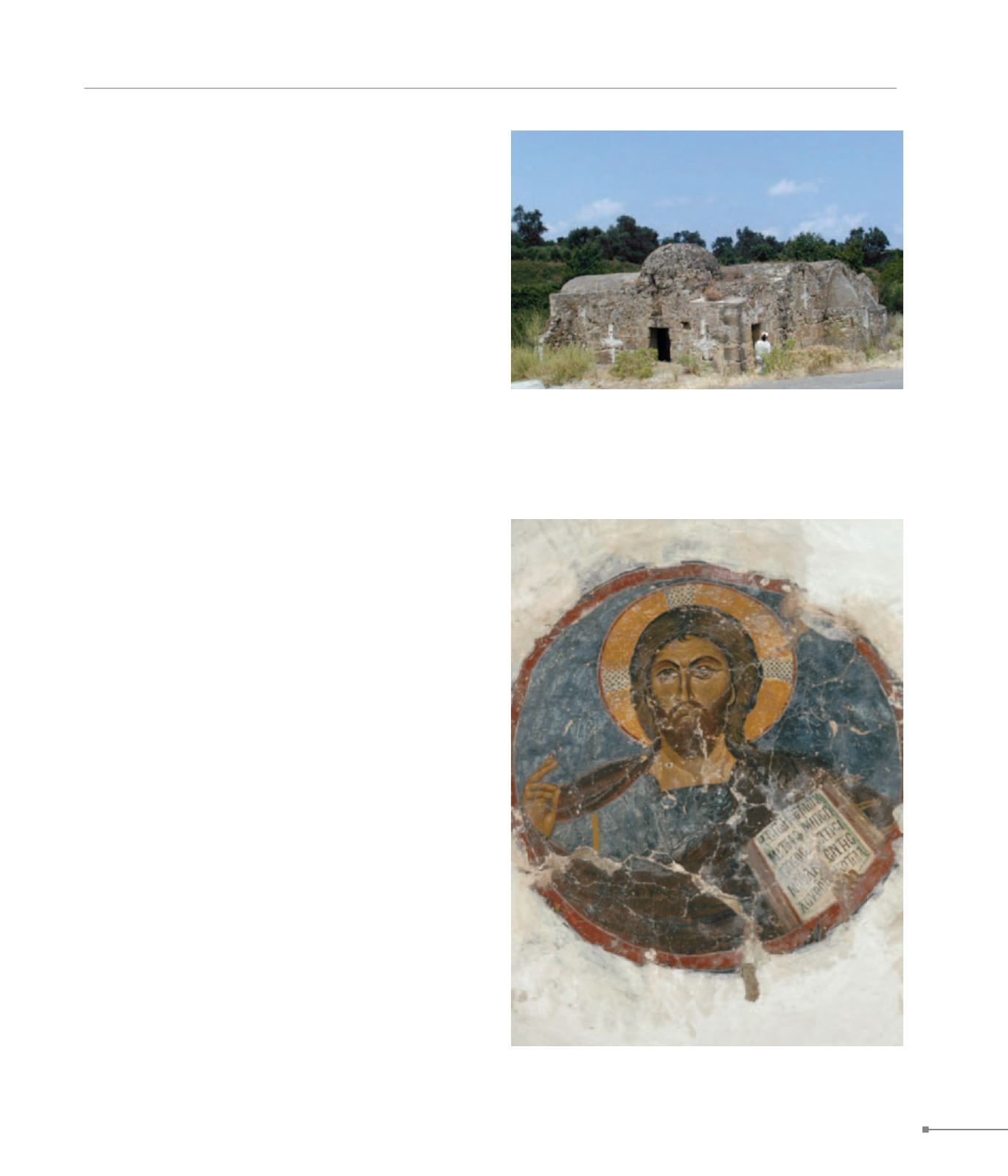
Aghios Demetrios.
Eleutherna.
CRETE
265
414. Viran Episkopi, Aghios Demetrios (Βιράν Επισκοπή, Άγιος
Δημήτριος)
413.
Aghios Demetrios.
The church of Aghios Demetrios, located on the W border of
Aghios Demetrios village, is a domed cross-in-square with
projecting horizontal crossarms (first half of the 11th c.). The
frescoes surviving in fragments date to the early 14th c.
414.
Viran Episkopi.
The small present-day village of Viran Episkopi is considered
to have been the see of Eleutherna in the second Byzantine
period, transferred from Eleutherna itself. Around the later
church of Aghia Irene the ruins of an Early Christian three-
aisled basilica with sculptures have been excavated. In the
countryside W of the village is found the three-aisled, now
barrel-vaulted church of Aghios Demetrios with an aisleless,
domed chapel without apse added to the S section. It is pos-
sible that this was built in the Mid-Byzantine period and served
as a bath house. Under Early Venetian rule the structure was
converted into a church with the addition of two apses and a
Late Gothic doorframe in the W.
415.
Prinos.
At the exit from a minor gorge is the church of Zoodochos
Pege (first half of 16th c.), the catholicon of a modest monas-
tery whose ruins can be discerned in the surroundings. It is a
domed, free cross plan church, its W side adjacent to a small
cave. All three doorways include Late Gothic features already
out of date at time of building. In the S wall of the W cros-
sarm is the tomb of a member of the Venetian-Cretan Zanga-
roli family; it is an arcosolium with rich, sculpted Renaissance
decoration. The church includes frescoes that can be dated to
the mid-16th c. At Erfoi, the barrel-vaulted, single-nave church
of Saint John with subsequent addition of transept features
decoration from the first half of the 14th c.
416. Eleutherna, Soter, wall painting (Ελεύθερνα, Σωτήρας,
τοιχογραφία)
416.
Eleutherna.
Eleutherna was an important ancient city that continued to
prosper in the Early Christian period as Eleutherna see. A
three-aisled, timber-roofed basilica with mosaic floors and
opus sectile has been excavated here. According to the


